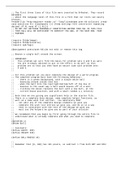Tentamen (uitwerkingen)
Test Bank for Understanding Financial Accounting, 2nd Canadian Edition by Christopher D. Burnley, ISBN: 9781119407003
- Vak
- Instelling
Test Bank for Understanding Financial Accounting, 2nd Canadian Edition by Christopher D. Burnley, ISBN: 9781119407003. chapters 1 to 12 test bank for Understanding Financial Accounting 2ce.
[Meer zien]




